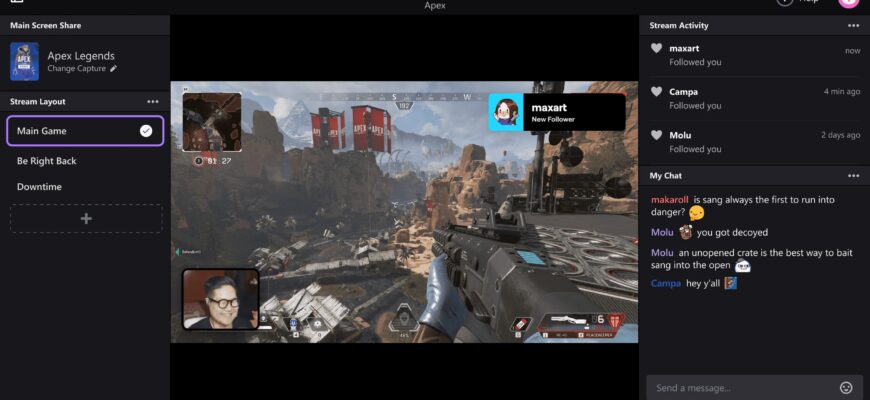In the dynamic world of live streaming, where platforms perpetually vie for supremacy and content creators navigate a complex ecosystem, Twitch, the long-reigning titan, has issued a fresh set of guidelines regarding multi-streaming. These aren`t just minor tweaks; they signal a clear intent to protect its turf in an increasingly competitive landscape.
The Fine Print: What`s Now Off-Limits
The updated policy, now detailed on Twitch’s official site, specifically targets the active promotion of rival platforms during a live broadcast. While creators have long leveraged multi-streaming to broaden their reach and diversify their audience, Twitch is now drawing a firm line in the digital sand, attempting to curtail behaviors it deems counterproductive to its own platform health.
Specifically, the purple platform is explicitly prohibiting any direct calls to action encouraging viewers to migrate to another service. This includes verbal appeals made by the streamer, on-screen banners, QR codes, or any form of link that directs viewers to a concurrent live stream elsewhere. It`s a nuanced distinction: merely linking to a static profile page on a competing platform remains permissible, but actively guiding an audience mid-stream to another live stream is now explicitly off-limits. One might imagine the intense internal corporate meetings where these `ingenious` creator loopholes were identified and swiftly closed.
Adding another critical layer to this directive, Twitch has also stated that streamers engaging in multi-streaming must not intentionally degrade the quality of their Twitch broadcast. This move aims to prevent creators from `short-changing` their Twitch audience in favor of, say, a higher-fidelity, more stable stream on another platform. It`s a seemingly fair demand, perhaps, but also a stark reminder of the platform`s desire to maintain its perceived premium status and ensure a consistent viewer experience, irrespective of a creator`s multi-platform strategy.
The “Why”: A Response to Shifting Sands
To fully grasp the impetus behind these refreshed rules, one need only glance at the broader streaming ecosystem. The past year has seen significant shifts, most notably with the rapid ascent of Kick, a new entrant that has openly courted creators with more favorable revenue splits and, notably, a more lenient content policy regarding certain types of streams.
Reports indicate that Kick has been steadily closing the gap on Twitch in terms of watch hours, capturing a notable portion of the market share. Meanwhile, Twitch itself has experienced a decline in this key metric for three consecutive quarters – a trend that undoubtedly has executives at Amazon-owned Twitch scrutinizing every aspect of their platform`s usage and competitive positioning. The declining numbers present a compelling context for Twitch’s proactive, rather than reactive, policy adjustments.
These new rules, therefore, appear less as a spontaneous policy clarification and more as a calculated, strategic response to intensifying market pressures. Twitch, it seems, is no longer content to simply be the biggest; it now feels compelled to actively discourage `poaching` of its audience, even if that audience is already multi-platform savvy and actively seeking diverse content experiences.
Implications for Creators: Navigating the New Normal
For content creators, particularly those who have meticulously built their brand across multiple platforms, these rules present a fresh dilemma. Multi-streaming offers diversification, access to varied demographics, and redundancy in a volatile industry where platform policies can change overnight. It serves as a crucial lifeline for many attempting to build a sustainable career in digital entertainment.
The rules don`t forbid multi-streaming outright, which is a significant relief for a substantial segment of the creator community. However, they undoubtedly make it harder to leverage Twitch`s considerable audience to grow other channels directly during a live session. Creators must now engage in a more delicate dance: staying within Twitch`s stringent bounds while still trying to expand their digital footprint and cultivate a loyal audience across various platforms, all without incurring the platform`s displeasure.
The Bigger Picture: The Ongoing Streaming Wars
In essence, Twitch is asserting its dominance, albeit in a more prescriptive and controlling manner. The underlying message is clear: “You can stream here, and elsewhere, but do not use our stage and our audience as a direct advertising vehicle for our rivals` show.” Whether this strategy will effectively stem the tide of competition, or inadvertently encourage more creators to question their primary platform allegiance in pursuit of true multi-platform freedom, remains to be seen.
The streaming wars are far from over, and Twitch`s latest move is a stark testament to the ongoing, dynamic battle for creator loyalty and viewer attention. It`s a fascinating evolution of digital real estate, where even the most established players must constantly adapt and, at times, tighten their grip, to maintain their position at the pinnacle of the live content industry.









